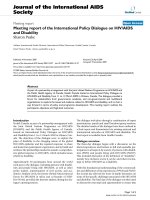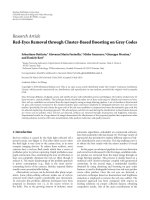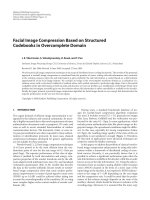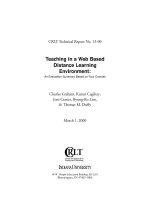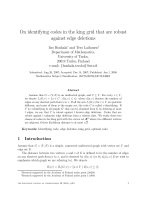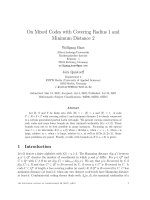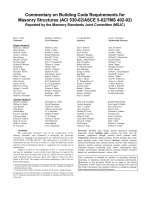Summary Dialogue on Concurrency Code
Bạn đang xem bản rút gọn của tài liệu. Xem và tải ngay bản đầy đủ của tài liệu tại đây (25.87 KB, 2 trang )
34
Summary Dialogue on Concurrency
Professor: So, does your head hurt now?
Student: (taking two Motrin tablets) Well, some. It’s hard to think about all the
ways threads can interleave.
Professor: Indeed it is. I am always amazed at how so few line of code, when
concurrent execution is involved, can become nearly impossible to understand.
Student: Me too! It’s kind of embarrassing, as a Computer Scientist, not to be
able to make sense of five lines of code.
Professor: Oh, don’t feel too badly. If you look through the first papers on concurrent algorithms, they are sometimes wrong! And the authors often professors!
Student: (gasps) Professors can be ... umm... wrong?
Professor: Yes, it is true. Though don’t tell anybody — it’s one of our trade
secrets.
Student: I am sworn to secrecy. But if concurrent code is so hard to think about,
and so hard to get right, how are we supposed to write correct concurrent code?
Professor: Well that is the real question, isn’t it? I think it starts with a few
simple things. First, keep it simple! Avoid complex interactions between threads,
and use well-known and tried-and-true ways to manage thread interactions.
Student: Like simple locking, and maybe a producer-consumer queue?
Professor: Exactly! Those are common paradigms, and you should be able to
produce the working solutions given what you’ve learned. Second, only use concurrency when absolutely needed; avoid it if at all possible. There is nothing
worse than premature optimization of a program.
Student: I see — why add threads if you don’t need them?
Professor: Exactly. Third, if you really need parallelism, seek it in other simplified forms. For example, the Map-Reduce method for writing parallel data
analysis code is an excellent example of achieving parallelism without having to
handle any of the horrific complexities of locks, condition variables, and the other
nasty things we’ve talked about.
1
2
S UMMARY D IALOGUE ON C ONCURRENCY
Student: Map-Reduce, huh? Sounds interesting — I’ll have to read more about
it on my own.
Professor: Good! You should. In the end, you’ll have to do a lot of that, as
what we learn together can only serve as the barest introduction to the wealth of
knowledge that is out there. Read, read, and read some more! And then try things
out, write some code, and then write some more too. As Gladwell talks about in
his book “Outliers”, you need to put roughly 10,000 hours into something in
order to become a real expert. You can’t do that all inside of class time!
Student: Wow, I’m not sure if that is depressing, or uplifting. But I’ll assume
the latter, and get to work! Time to write some more concurrent code...
O PERATING
S YSTEMS
[V ERSION 0.90]
WWW. OSTEP. ORG

